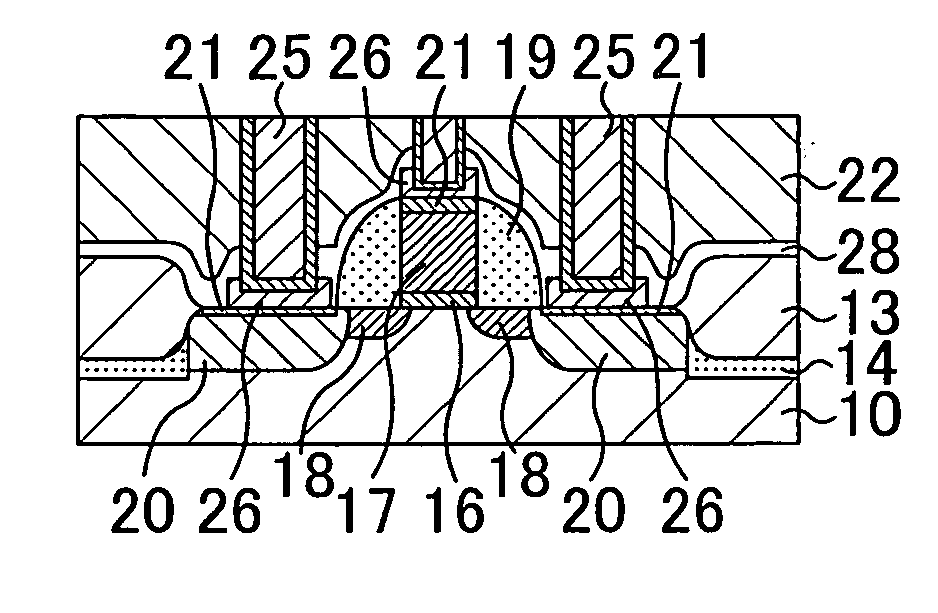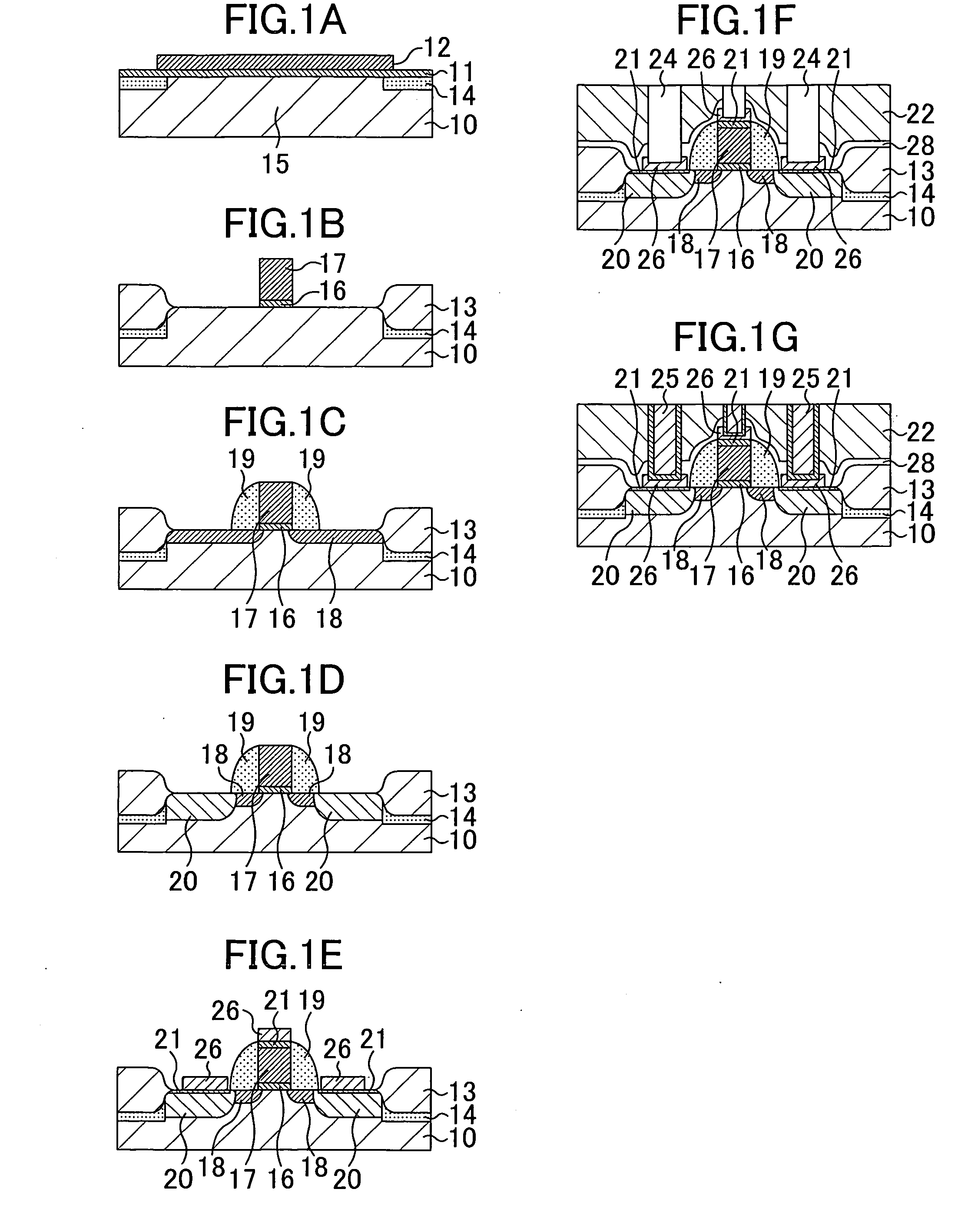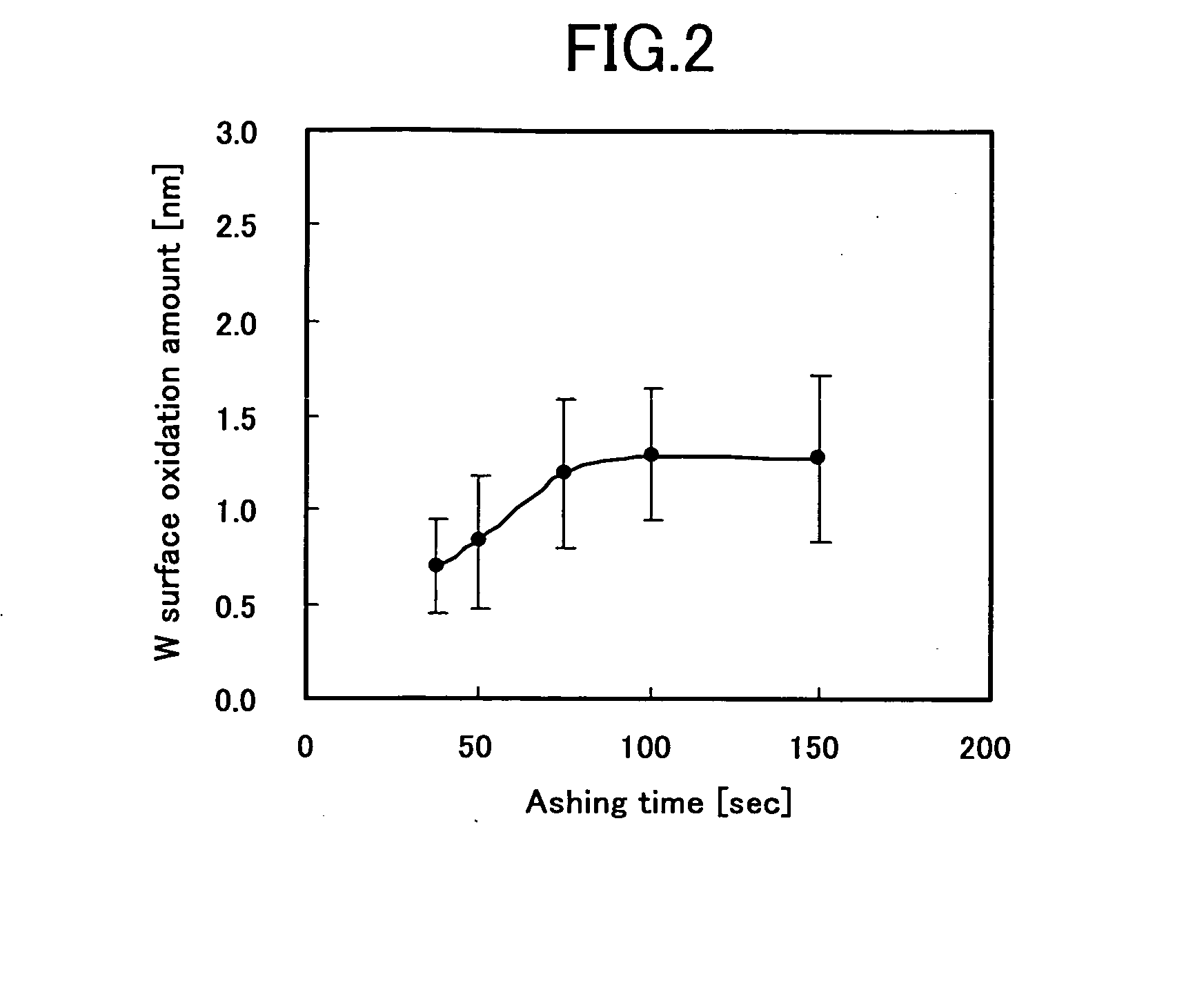Connection structure and fabrication method for the same
- Summary
- Abstract
- Description
- Claims
- Application Information
AI Technical Summary
Benefits of technology
Problems solved by technology
Method used
Image
Examples
embodiment 1
[0047]A fabrication method for a connection structure in Embodiment 1 of the present invention will be described with reference to FIGS. 1A through 1G. FIGS. 1A through 1G are cross-sectional views showing process steps of the fabrication method in Embodiment 1.
[0048]In this embodiment, description will be made focusing attention on one NMIS transistor and its surroundings constituting a semiconductor integrated circuit device.
[0049]In the fabrication method for a connection structure in this embodiment, first, as shown in FIG. 1A, a p-type impurity such as boron is ion-implanted in a predetermined region of a silicon substrate 10 doped with an n-type impurity, to form a p-well 15. A silicon oxide film 11 and a silicon nitride film 12 are then deposited on the n-type impurity-doped silicon substrate 10. A resist pattern (not shown) is formed by lithography, and using the resist pattern as a mask, the silicon nitride film 12 is then patterned by reactive ion etching. The patterning o...
embodiment 2
[0065]A fabrication method for a connection structure in Embodiment 2 of the present invention will be described with reference to FIGS. 3A through 3E. FIGS. 3A through 3E are cross-sectional views showing process steps of the fabrication method in Embodiment 2.
[0066]In the fabrication method in this embodiment, the method in Embodiment 1 is followed until the formation of the source / drain regions 20 as shown in FIG. 3A.
[0067]Thereafter, as shown in FIG. 3B, Ni is deposited to a thickness of 15 nm by sputtering and then subjected to first heat treatment in a nitrogen atmosphere, to form silicide films 21 on the Si-exposed source / drain regions 20 and gate electrode 17. Selective etching is then performed using wet etching to remove unreacted Ni. As an example of conditions for the wet etching, a liquid mixture of sulfuric acid and hydrogen peroxide, for example, may be used. Thereafter, the silicide films 21 are subjected to second heat treatment to reduce the resistance of the silic...
embodiment 3
[0076]A fabrication method for a connection structure in Embodiment 3 of the present invention will be described with reference to FIGS. 4A through 4E. FIGS. 4A through 4E are cross-sectional views showing process steps of the fabrication method in this embodiment.
[0077]In the fabrication method in this embodiment, the method in Embodiment 1 is followed until the formation of the source / drain regions 20 as shown in FIG. 4A.
[0078]Thereafter, as shown in FIG. 4B, Ni is deposited to a thickness of 15 nm by sputtering, and then subjected to first heat treatment in a nitrogen atmosphere to form silicide films 21 on the Si-exposed source / drain regions 20 and gate electrode 17. Selective etching is then performed using wet etching to remove unreacted Ni. As an example of condition for the wet etching, a liquid mixture of sulfuric acid and hydrogen peroxide, for example, may be used. Thereafter, the silicide films 21 are subjected to second heat treatment to reduce the resistance of the sil...
PUM
 Login to View More
Login to View More Abstract
Description
Claims
Application Information
 Login to View More
Login to View More - R&D
- Intellectual Property
- Life Sciences
- Materials
- Tech Scout
- Unparalleled Data Quality
- Higher Quality Content
- 60% Fewer Hallucinations
Browse by: Latest US Patents, China's latest patents, Technical Efficacy Thesaurus, Application Domain, Technology Topic, Popular Technical Reports.
© 2025 PatSnap. All rights reserved.Legal|Privacy policy|Modern Slavery Act Transparency Statement|Sitemap|About US| Contact US: help@patsnap.com



